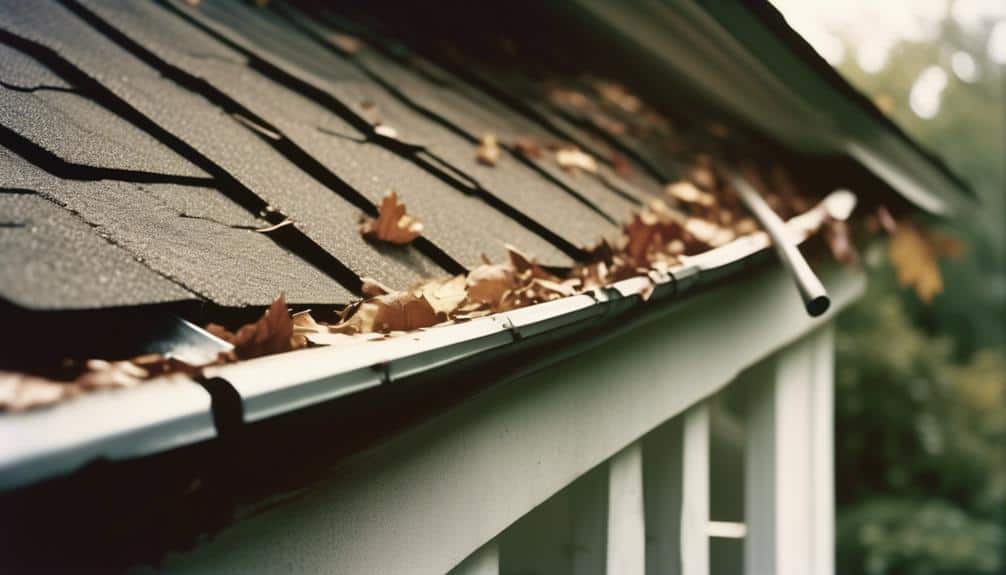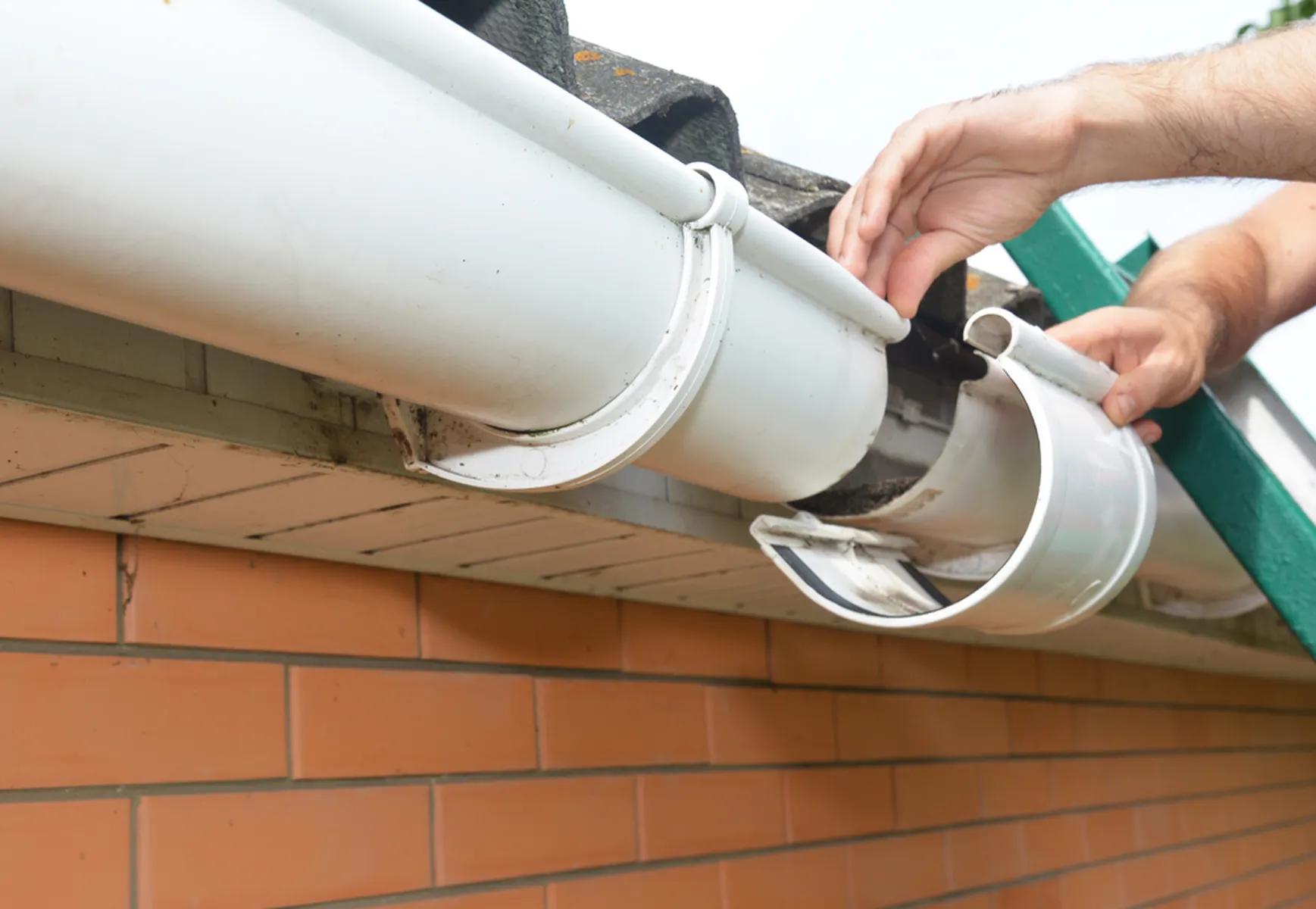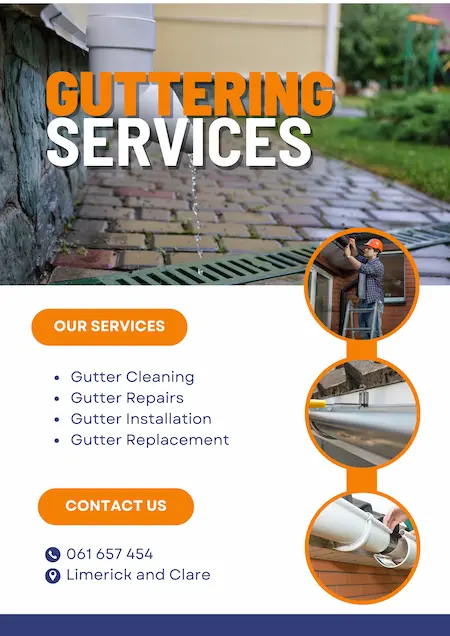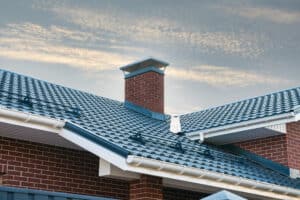Broken gutters can quickly escalate from a minor inconvenience to a major problem, leading to water damage and structural issues. To prevent such complications, it’s crucial to assess the extent of gutter damage and determine the most appropriate course of action.
This article explores the factors to consider when deciding whether to repair or replace damaged gutters. We’ll provide insights into gutter damage assessment, repair methods, and the circumstances where replacement is the best option. By understanding these factors, you can make informed decisions to maintain the integrity of your home’s gutter system.
Key Takeaways
- Assess the extent of the gutter damage, including watermarks, overflowing gutters, sagging sections, and leaks behind gutters. Consider potential damage to siding, foundation, and landscaping.
- Repair techniques include scrubbing away debris, using silicone caulk or roofing cement for small holes, applying flashing and gutter screws for larger holes, adjusting slope and replacing faulty gutter hangers for sagging gutters, and cutting and securing new sections for beyond-repair gutters.
- Replacement should be considered for pervasive rust or severe structural damage, gutters over 20 years old, irreparable cracks or detachment from the home, elevated structures requiring professional installation, and potential expenses associated with water damage repairs.
- When choosing materials and contractors, evaluate resistance to corrosion, weight, and compatibility with the structure. Aluminum gutters are lightweight and rust-resistant, while stainless steel gutters offer robustness and a sleek appearance. Hire reputable contractors for correct installation and ensure proper installation of gutter aprons and adequate spacing of gutter hangers.
Why Is Assessing Gutter Damage Important?
To determine the extent of damage to your gutters, conduct a thorough inspection. Begin by visually examining the gutters from the ground, looking for signs of sagging, bending, or broken sections. Check for leaks, water stains, or evidence of water overflow.
For a more detailed assessment, climb a ladder (ensuring safety first) and inspect the gutters closely. Look for rust, corrosion, or cracks. Examine the gutter attachments, ensuring they are secure and not loose.
Pay attention to any areas where debris or leaves have accumulated, as these can contribute to gutter damage. Additionally, check the downspouts for obstructions or leaks.
By carefully inspecting your gutters, you can identify the specific areas of damage and determine the most appropriate course of action for repair or replacement.
What Are the Repair Techniques for Gutters?
Repairing damaged gutters is crucial for maintaining a home’s drainage system. The appropriate technique depends on the severity of the damage.
For clogged gutters, remove debris using a stiff brush before proceeding with repairs. Small holes can be sealed with silicone caulk or roofing cement, while larger holes may require a metal patch secured with gutter screws.
Sagging gutters often necessitate adjusting the slope and replacing faulty hangers. Use a cordless drill to install new screws and hangers, ensuring the gutter is firmly attached.
In cases of extensive damage, gutter replacement may be necessary. This involves cutting and installing a new section of gutter to restore the drainage system’s integrity.
Is It Better to Repair or Replace Loose Gutters?
When addressing loose gutters, it’s essential to evaluate the extent of damage to determine whether repair or replacement is the most appropriate course of action. Minor damage may be resolved through simple repairs, while extensive damage may necessitate replacement to prevent further issues and ensure long-term gutter functionality.
When to Consider Replacement?
Gutter replacement should be considered when the existing system exhibits significant wear and tear, such as pervasive rust, severe structural damage, or irreparable cracks. Gutters over 20 years old may have reached the end of their functional lifespan.
For homes with tall structures, professional gutter installation is essential to ensure proper attachment and functionality. While the initial cost may be higher, it’s a wise investment compared to the potential expenses of water damage repairs.
If your gutters are severely damaged or deteriorated and DIY repairs are not feasible, professional gutter replacement is recommended. Replacing old gutters can prevent water damage, enhance safety, and improve your home’s curb appeal.
How to Choose Materials and Contractors?
Selecting appropriate materials and hiring a reputable contractor are crucial for a successful gutter installation or repair. These decisions significantly impact the durability, functionality, and protection of your home from water damage.
Material Considerations:
- Resistance to Corrosion: Consider materials like aluminum and stainless steel, which are resistant to rust and corrosion.
- Weight: Lightweight materials like aluminum are often preferred, especially for taller homes.
- Compatibility: Ensure the materials are compatible with your existing structure and local climate.
Professional Gutter Installation:
- Gutter Apron: A properly installed gutter apron is essential for directing water into the gutters and protecting fascia boards.
- Hanger Spacing: Ensure gutter hangers are adequately spaced to support the gutter’s weight when full.
Practical Guide:
- Research Materials: Explore options like aluminum, vinyl, and stainless steel, considering cost and suitability.
- Obtain Quotes: Get competitive quotes from reputable gutter contractors.
- Gutter Apron: Assess the need for a gutter apron to protect fascia boards.
- Gutter Type: Compare sectional and seamless gutters based on maintenance and leak potential.
- Visit a Hardware Store: Familiarize yourself with available options and pricing.
By investing time in research and selection, you can ensure a successful and professional gutter installation that will protect your home from water damage and enhance its curb appeal.
What Are the Benefits of Gutter Maintenance?

Having established the importance of choosing quality materials and skilled contractors for gutter installation, ongoing maintenance and preventive measures are paramount to extend the life of your gutter system and ensure optimal performance. Regular inspection and gutter cleaning are crucial maintenance and prevention tips to prevent blockages that can lead to costly damages. A brush to scrub away leaves and debris, followed by a garden hose to wash down the gutters, can ensure proper water flow and save money on repairs. Utilizing gutter guards is a preventative measure that can greatly reduce the amount of debris that enters the gutters. Gutter Protection helps to maintain the cleanliness and functionality of the system, further safeguarding your investment. Below is a concise table outlining key maintenance actions and their benefits:
| Maintenance Action | Benefit |
|---|---|
| Regular Inspection | Early detection of potential issues |
| Gutter Cleaning | Prevents blockages, preserves integrity |
| Installation of Gutter Guards | Reduces debris, minimizes cleaning needs |
What are the most common gutter problems after heavy rain?
After heavy rain, troubleshooting rain gutter problems commonly include clogging from debris, overflowing due to blockages, and damage from the weight of accumulated water. It is important to regularly inspect and maintain gutters to prevent these issues and ensure proper drainage.
Frequently Asked Questions
Conclusion
In conclusion, the assessment of gutter damage necessitates careful examination to determine the most pragmatic course of action. Utilizing advanced repair techniques can extend the lifespan of existing gutters, while severe deterioration may warrant replacement. The selection of appropriate materials and qualified contractors is critical for ensuring long-term functionality. Regular maintenance and adherence to prevention strategies are indispensable in safeguarding against future gutter malfunctions, thereby preserving the structural integrity of the property.






